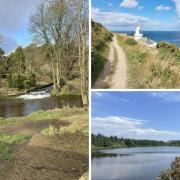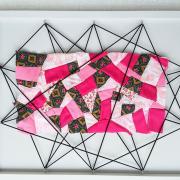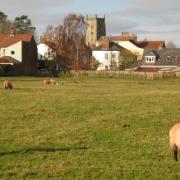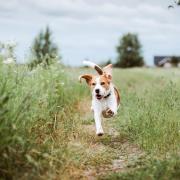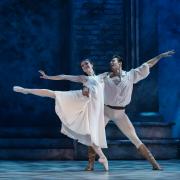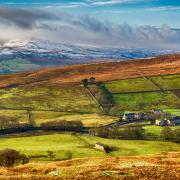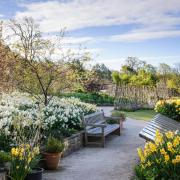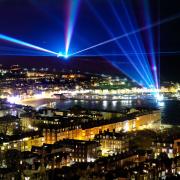Renowned Whitby willow sculptor Emma Stothard’s striking work is celebrated all over the world.

Emma Stothard’s mum still treasures a spindly drawing Emma sketched when she was two-years-old. ‘It was a cat, or a pram, or maybe it was a cat on wheels,’ says Emma. ‘It’s hard to tell, but mum recognised something in that drawing that convinced her I had artistic skills.’
Emma has come a long way since then. Her work has evolved into breath-taking life-size three dimensional sculptures which can be seen at festivals, gardens, public spaces and the private collections of celebrities and royalty.
Yet Emma stays close to her East Yorkshire roots, where the wildlife of the rugged coastline and vast open countryside continues to inspire her highly sought-after willow creations.
‘When I was growing up I spent hours sketching and drawing and have always loved wildlife in all its forms,’ she says. ‘For me it was complete freedom. It was never questioned that I would go to art college one day. It was just meant to be.’

Years later all that time in the Holderness countryside paid dividends.
‘Now I’ve found a different kind of freedom through my work. It’s down to how you think, how you live and who you speak to. Sculpting brings you into contact with so many like-minded people that there is no shortage of inspiration and encouragement – and it is so absorbing that when you stop it’s like coming up for air.’
Emma completed a degree in Fine Art at Southampton and shortly afterwards moved to the Somerset Levels to learn the traditional skills of growing, coppicing, bundling and weaving willow. She discovered the ancient art of basket making and worked alongside celebrated willow sculptor Serena De La Hey.
Buzzing with ideas, Emma returned to Yorkshire with a car boot full of withies and began to create small animals to sell locally. But it was an exhibition of her work at The Harrogate Flower Show which generated enough interest to convince her to pursue her dream.

She qualified and worked as a teacher at Whitby Community College, where the successful and forward thinking Art Department fully supported her development as a sculptor. While she was teaching Emma met her husband, chef consultant Rob Green who is also a chef ambassador for seafish (and about whom you can read elsewhere in this magazine).
The real turning point for Emma was a major commission from the Far East. The Louis C Tiffany Museum and Water Gardens in Matsue, Japan, home to the largest collection of Tiffany glass in the world, commissioned Emma to create a fitting central feature to their ‘English Garden’ on the theme of East Meets West. Since then she hasn’t looked back. She exhibits all over the UK and abroad, and her willow deer, horses, hares, dogs, cattle and geese grace the grounds of stately homes, galleries and private homes and gardens around the country. These include the Highgrove estate where a large scale willow sculpture of Prince Charles’s beloved Jack Russell dog ‘Tigga’, made from willows grown on the estate, was delivered as a ‘thank you’ gift for Emma’s loan from the Prince’s Trust, which enabled her to start her career.
She has even produced huge lobsters for the annual Arts and Heritage Festival held every September in Staithes, and a pair of life-size bronze wire elephants for the Garden City of Ebbsfleet.
Last year Emma sculpted the Craven Heifer for the 160th Great Yorkshire Show (introduced to HRH the Princess Royal) which is now permanently sited in front of the Yorkshire Agricultural Society building in Harrogate. This year she is scheduled to take part in a host of prestigious art events and exhibitions, including an exhibition of sculptures of rare breeds and British wildlife, domestic animals and birds, at Highgrove. Emma is also installing an exhibition of British wildlife alongside the Wildlife Photographer of the Year exhibition at Beverley Art Gallery between June 22 and August 31.

Yet Emma has never lost sight of her roots and the methods she uses to create her artworks are as old as willow weaving itself. She begins with rough sketches and measurements which she translates into a basic steel armature, which she welds herself. At this point the scale, strength, dimensions and proportions are crucial to the success of the finished piece and must be accurate before the sculpture is completed.
‘There is room for manoeuvre, and a sculpture develops and evolves as it goes along, but the armature must be right at that early stage otherwise it can throw everything off-kilter,’ she says.
Once she is satisfied the frame is right, she begins the long, process of building up the layers of willow, which she pulls, threads and winds into contours to create her intricate creatures. All the withies are soaked for hours beforehand to make them as pliable as possible.
‘I am constantly stepping back, referring to the drawings, adjusting and getting cross with it,’ she says. ‘It’s like developing a drawing, or a jigsaw puzzle, only in 3D. What I love about working with willow is the connection you feel to it. It’s such a tactile, natural material.’
Although the willow sculptures will naturally weather and age, clients are recommended to protect them with a concoction of linseed oil and turps, sprayed liberally over each piece four times a year.
In recent months Emma has completed sculptures in bronze and silver wire, which is more durable and creates a very different finish, but her first love will always be willow.
‘The nature of willow takes me right back to my childhood when I used to sit in the fields and draw the wildlife around me,’ she says. ‘I love feeling a part of all that and getting back to my roots. Having said that, I shall always embrace new challenges. My dream now would be to go to the Camargue and create sculptures of bulls and flamingoes. In fact I’m currently working on a flamboyance of flamingoes to be included in this year’s Newby Hall and Gardens contemporary sculpture exhibition. You don’t see many of those in people’s gardens, but there’s a first time for everything.’
To see more of Emma’s work, go to emmastothard.com.






